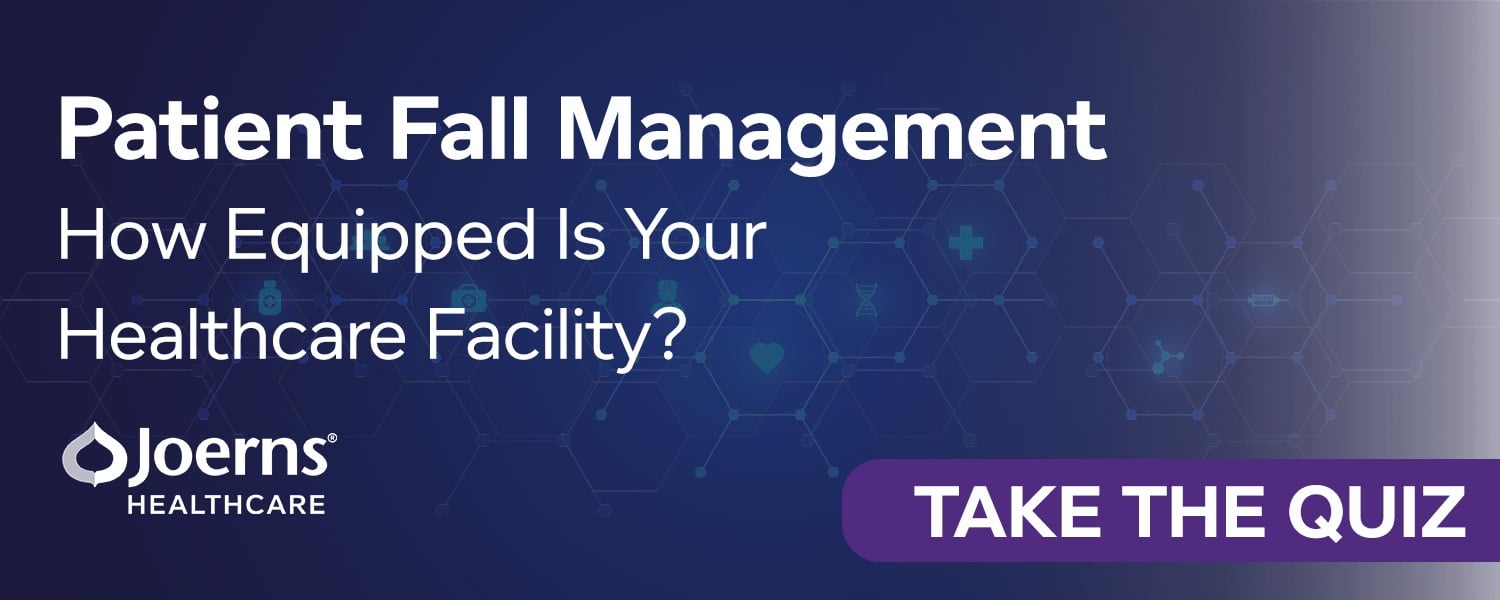Falls bring catastrophic health results. According to the Centers for Disease Control and Prevention (CDC), approximately 36 million older adults fall annually. More than 32,000 of these falls result in fatalities. Beyond the alarming loss of life, the true impact of falls harms everyone involved–facilities, families, and the patients who survive. The economic burden and growing number of falls each year present an enormous problem.
The Joint Commission Center for Transforming Healthcare found that 35-45 percent of fall patients sustain injuries, including debilitating head trauma, fractures, and chronic wounds. Falls prolong recovery time from anywhere from 6 to 7 days and cost a facility a staggering $14,000 per fall. Additionally, falls bring an additional burden to the nurses and care team in charge of the patient. The staff now has to pick up the patient off the floor, which could injure the nurse or the technician. The loss of mobility and independence means that nurses must spend longer hours tending to a patient’s needs.
These numbers alarm facilities to begin implementing and updating their evidence-based fall prevention initiatives. This solution has been shown to reduce falls by around 19 percent and reduce the cost of falls in facilities struggling to make ends meet. According to one study, two health systems implementing an evidence-based fall prevention strategy saved upwards of $22 million over five years.
How Patients Process the Traumatic Impact of Falls
A fall brings even more frustration for patients who might be tired of suffering from chronic illness or a slow recovery. It adds days, if not weeks, to their recovery time. It requires them to invest in physical or occupational therapy. Furthermore, it can wreak havoc on their morale. This introduces a vicious cycle: patients who are depressed are at a higher fall risk. Patients who fall may suffer from more depression.
Falls may also cause whatever condition or injury they may have to become aggravated. Furthermore, the impact of falls doesn’t just affect patients physically. Many will pay out of pocket for specific treatments that their insurance, Medicare, or Medicaid cannot cover. For those on a fixed income, this unexpected cost can have intense, long-term effects on their quality of life.
The Impact of Falls on Families & Caregivers
According to the Journal of the American Geriatrics Society, the medical costs associated with fatal and nonfatal falls amount to around $50 billion annually. Private and other payers typically shelled out at least $12 billion related to these costs. While insurance can cover a decent portion of these costs, families must often help their loved ones find the means to afford more care.
Patients who lose access to mobility will also require more care. Many who fall cannot perform everyday functions with complete independence. This problem involves care teams in facilities and family members pouring time and effort into helping patients go to the bathroom, get dressed, and even eat and drink.
The Impact of Falls Comes With a Hefty Price Tag for Facilities
Falls come with long-term effects on facilities. They affect reputation, add to the burden of care a facility carries daily, and strain the budget. One study found that a health system paid around $62,000 per fall each year in additional costs. While some falls are not avoidable, implementing evidence-based fall prevention saves facilities some money, allowing them to reallocate it to other much-needed services.
Lessen the Impact of Falls With Joerns Healthcare
Joerns Healthcare seeks to offer facilities that care for patients at risk of falls the tools they need to lower the chances of falls and save lives. Using methods like enhanced data tracking, frequent updates, asset tracking for the right equipment, and other new and improved means, nurses and caregivers can give their patients the peace of mind they need to improve. For more information, contact our team today.
